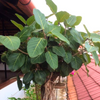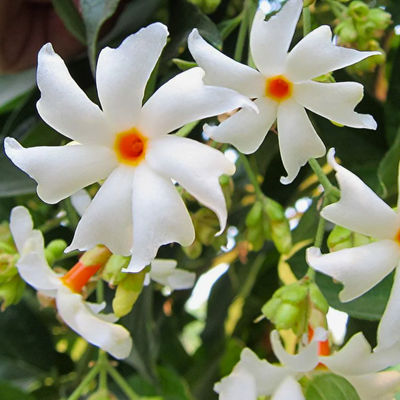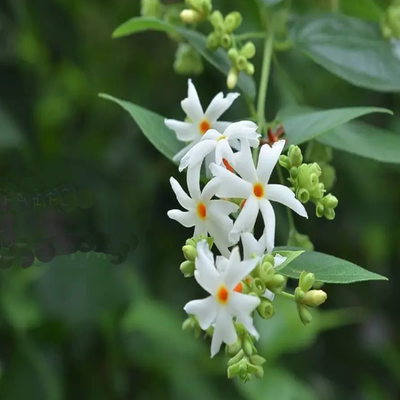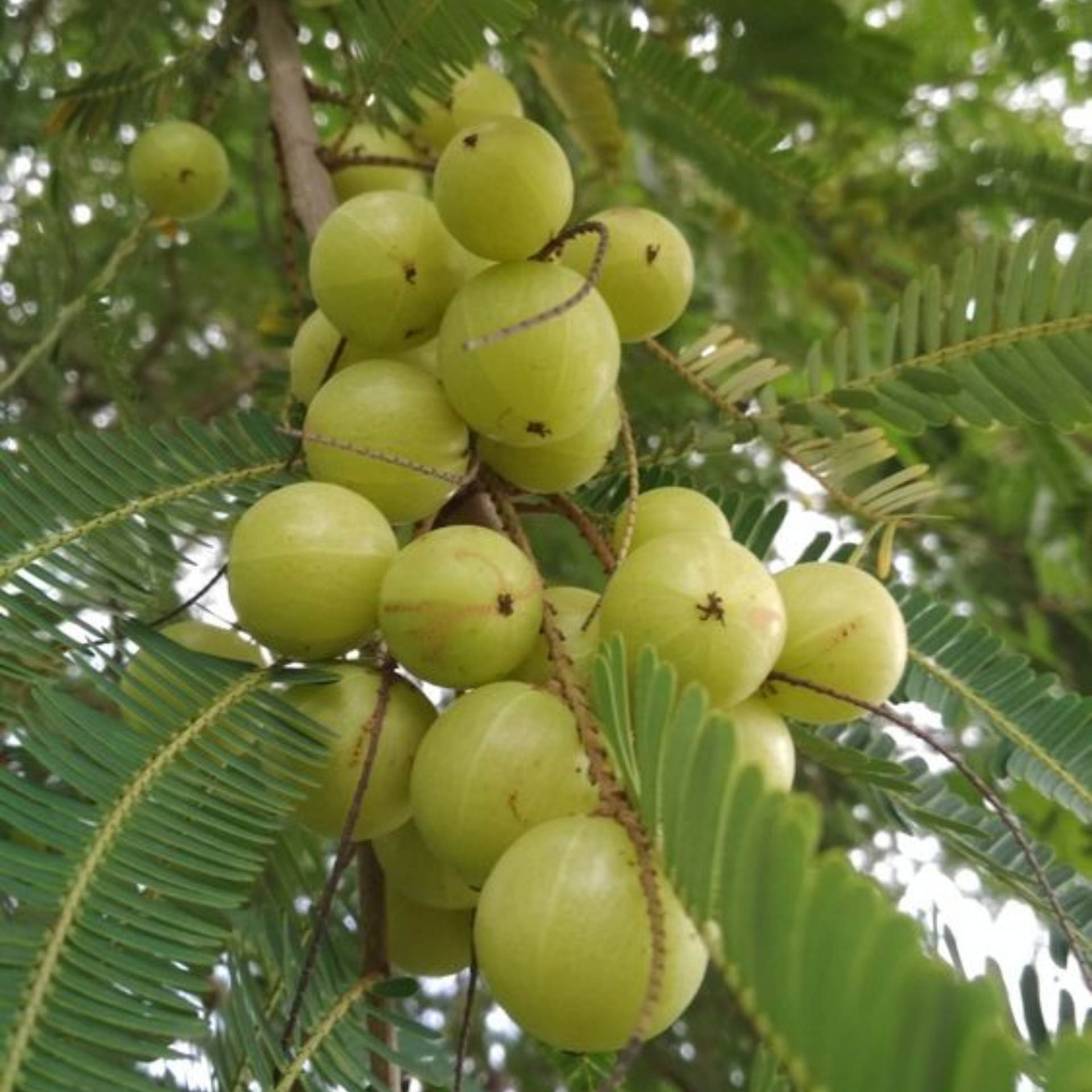

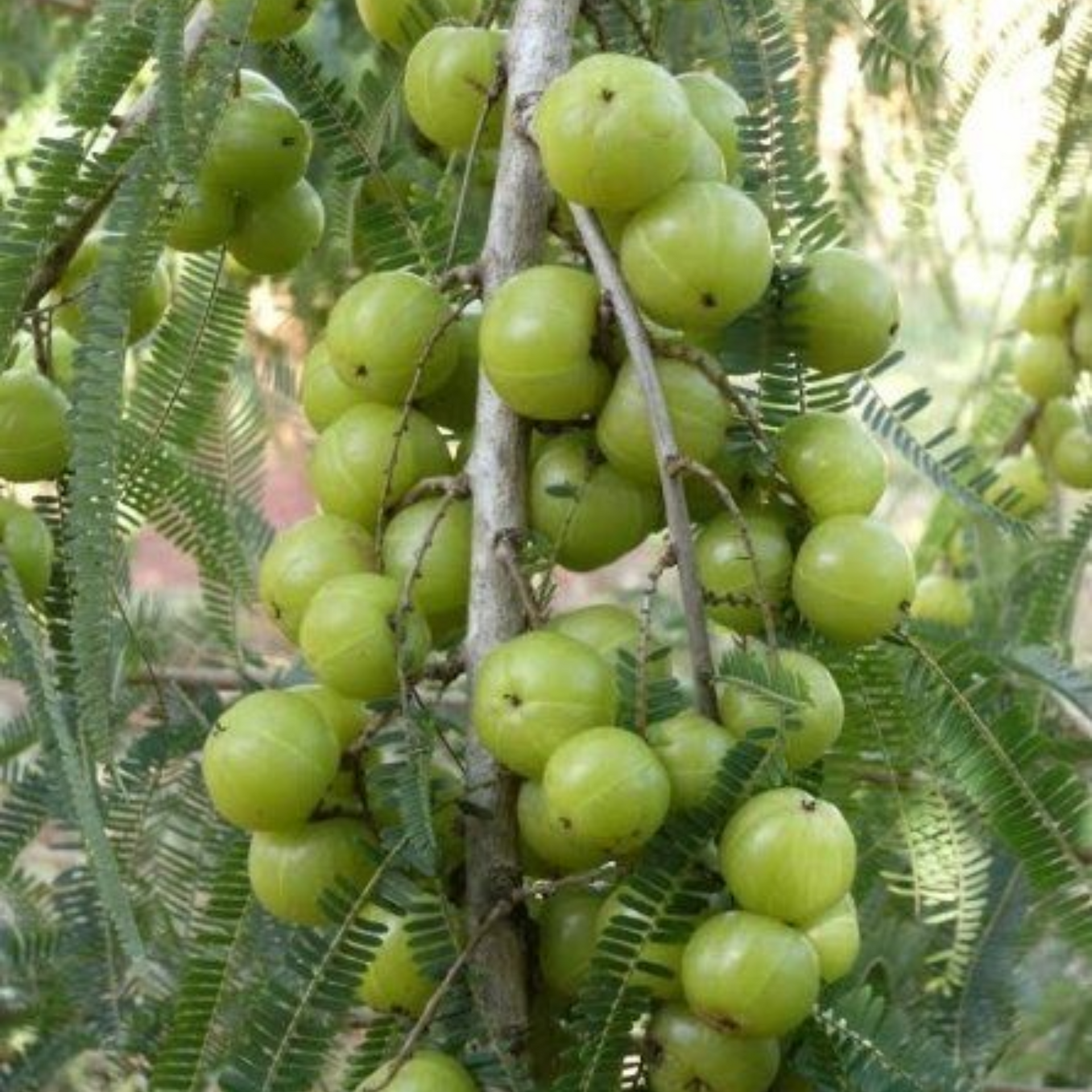
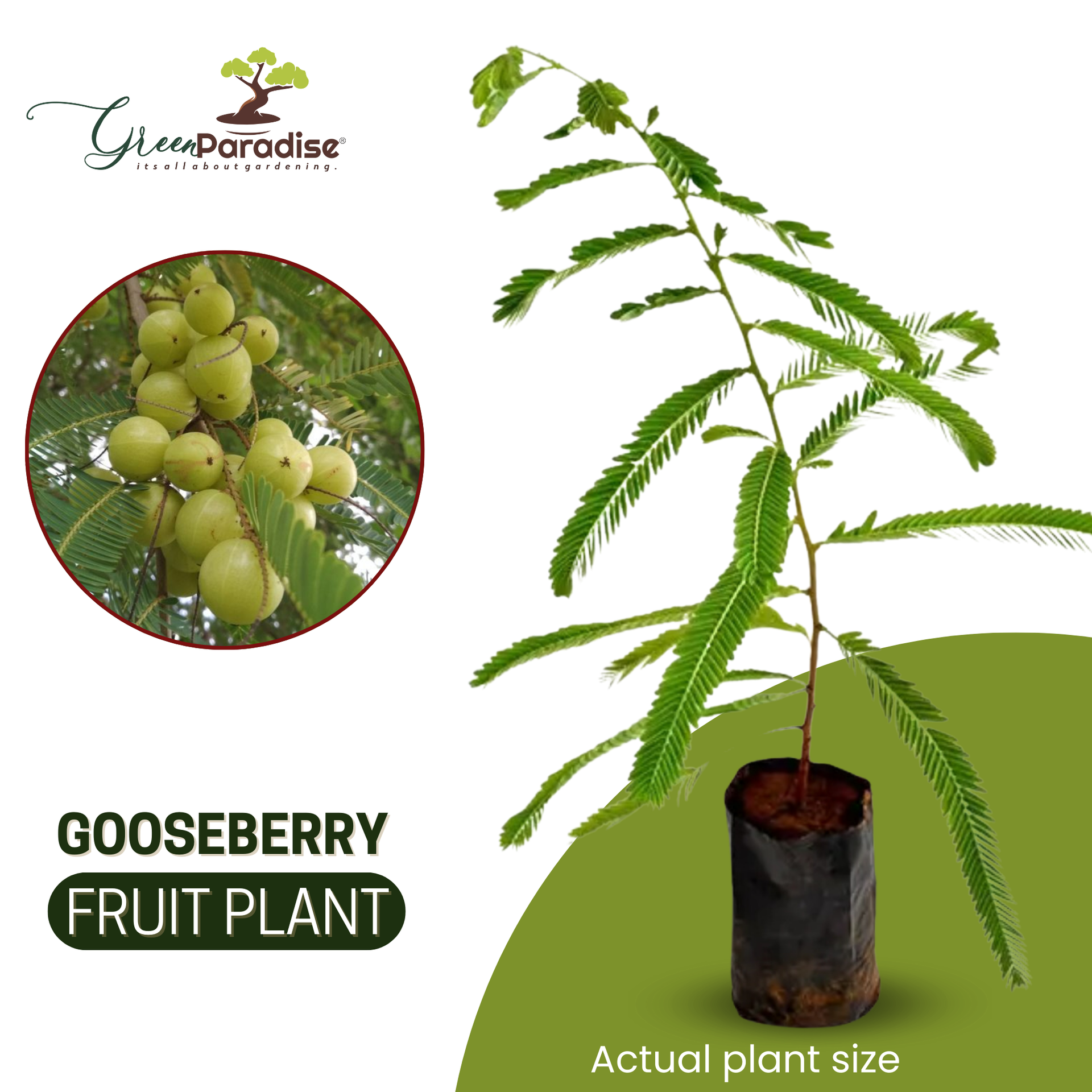
Green Paradise Offers Healthy Awla Plant (Gooseberry)
About Awla Plant
The Awla plant, also known as Indian gooseberry or amla (Emblica officinalis), is a small to medium-sized deciduous tree native to the Indian subcontinent. It belongs to the Euphorbiaceae family and is highly regarded in Ayurvedic medicine for its numerous health benefits. The word "awla" means "sour" in Hindi, reflecting the characteristic taste of its fruit.
The amla tree typically grows 8-18 meters in height and has a crooked trunk with spreading branches. The leaves are simple, light green, and arranged alternately on the stems. It produces small, pale green flowers with a pleasant fragrance.
The most sought-after part of the Awla plant is its fruit, which is a round, light green berry-like drupe. The fruit is known for its extremely high vitamin C content, containing more vitamin C than oranges. It is also a rich source of antioxidants, minerals, and other essential nutrients like calcium, iron, and vitamins A and E.
In traditional Ayurvedic medicine, amla has been used for centuries due to its numerous medicinal properties. It is believed to have rejuvenating and immune-boosting effects. Amla is used in various forms, including fresh fruit, juice, and powder, and as an ingredient in herbal formulations.
Some potential health benefits associated with amla include:
Immunity enhancement:
Amla strengthens the immune system, helping the body fight off infections and diseases.
Antioxidant properties:
The high levels of antioxidants in amla help combat free radicals and reduce oxidative stress, which can contribute to various chronic diseases.
Digestive health:
Amla is known to support digestion and alleviate common digestive problems like constipation and acidity.
Hair and skin health:
Amla is often used in hair oils and skincare products due to its nourishing properties. It can promote hair growth, prevent premature graying, and improve skin complexion.
Heart health:
Amla may help lower cholesterol levels, regulate blood pressure, and reduce the risk of heart disease.
Anti-inflammatory effects:
Amla has anti-inflammatory properties that may help alleviate symptoms of arthritis and other inflammatory conditions.
Amla can be consumed in various ways, such as eating fresh fruit, drinking its juice, or using amla powder in recipes, smoothies, or herbal preparations. It is generally considered safe, but it's always recommended to consult a healthcare professional before adding new supplements or herbal remedies to your routine, especially if you have any pre-existing medical issues, or are using medications.
Overall, the Awla plant, or amla is a versatile and highly valued plant in traditional medicine due to its potential health benefits and nutritional value.
How To Grow Awla Plant (Gooseberry)
Growing an Awla plant, also known as Indian gooseberry or amla, is a rewarding experience.

